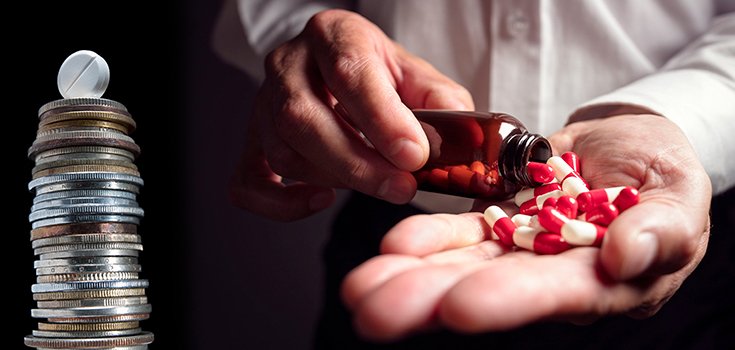Insane: Free Drug for Debilitating Disease Leaps to $375k a Year

If you are fortunate enough to have good health insurance, you have probably looked at a pharmacy bill and breathed a sigh of relief that you don’t have to pay the full amount owed. You may have also questioned how on earth a bottle of pills could cost hundreds or even thousands of dollars. Here is the story of how one boy, stricken with a chronic autoimmune disorder, went from free to costing $375,000.
As an 18-year-old high school senior, Will Schuller was an avid runner, but he began noticing that his mile time kept slowing down. Within weeks of noticing this, Will, now a mechanical engineering student at the University of Tulsa, wasn’t able to run even half a mile.
Read: Merck Executive Explains Why Drug Prices are Out of Control
Will began struggling to even walk from the school parking lot to his classes and he became unable to exercise.
He said:
“Everyone knew I was this fit guy, and in just a matter of a month, you see me struggling to walk from one side of the hallway to the other. My sister would have to piggyback me up the stairs.”
It was at this point that Will’s parents pulled him out of school.
A neurologist eventually figured out what was wrong with Will. Right around Christmas 2014, Will was diagnosed with a rare neurological disorder called Lambert-Eaton Myasthenic Syndrome (LEMS).

Dr. Ted M. Burns, a professor of neurology at the University of Virginia, explained that LEMS is “a chronic autoimmune disorder that affects strength and muscle fatigue ability.”
LEMS, a life-altering illness, affects about 3,000 people in the United States, according to Burns.
Until recently, a drug that treats LEMS was available free-of-charge for patients through a U.S. Food and Drug Administration (FDA) program called “compassionate use.”
As soon as Will tried the drug, called 3,4-diaminopyridine, or 3,4-DAP, he immediately felt better. So much better, in fact, that within 40 minutes of taking his first dose, he was on his feet and celebrating at the Mayo Clinic, where he was being treated.
Will’s mother, Ann Schuller, said:
“He skips out to the lobby. And we skip on down to the next appointment. And I’m with the wheelchair trying to follow him back down. I don’t believe in miracles. But that was pretty darn close to one. … It was a miracle drug, for sure.”
3,4-DAP was manufactured by Jacobus Pharmaceuticals, a small New Jersey company, from 1992 until just recently, when another company, Catalyst, received the exclusive rights to the drug. Catalyst added a preservative, changed the drug’s name to Firdapse, and started charging $375,000 a year for the medicine.
Burns said:
“This is not a story about innovation. This is a story about exploitation.”
Will’s parents knew a price increase was coming. The doctors at the Mayo Clinic warned them as much. But they were shocked beyond comprehension when they saw the new price tag on Firdapse.
Bob Schuller, Will’s dad, commented:
“We’re paying something dramatically less than that. But everyone’s premiums are going to go up as a result of this. So it’s a cost to the entire system.”
Read: Disgusting: Even Huge $11 Billion Fines Don’t Stop Big Pharma
Senator Bernie Sanders of Vermont fired off a stern letter to Catalyst in early February, demanding that the company explain the incomprehensible price hike, and called it “a blatant fleecing of American taxpayers.”
But Catalyst shows no signs of backing down.
During a conference call in December 2018, Catalyst CEO Patrick J. McEnany told investors:
“Our pricing strategy reflects our focus on ensuring broad and sustainable coverage from both private and public payers and assistance for payers in need.”
Catalyst claims that “most patients will pay approximately $10 out of pocket as a co-pay.”
Burns said that even though patients won’t actually have to pay the full $375,000 for the drug, Catalyst bought it “knowing that they could charge whatever they wanted if they got FDA approval.”
Will said:
“They could charge $10 million and I would have to find a way to pay for it. I don’t think I would be alive today without DAP. I would for sure be in a wheelchair.”
His mother questions why her insurance company has to pay so much for a drug that costs little to make.
“Is that really the kind of system we want to have?”
Source
